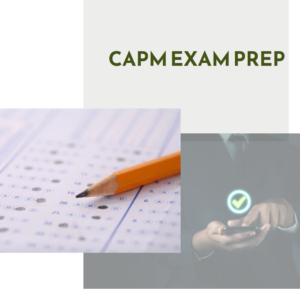Introduction
Have you ever wondered how complex projects are planned, executed, and delivered successfully? How do project managers manage multiple tasks, teams, and stakeholders, while ensuring quality, budget, and time constraints? What are the skills and tools that project managers use to achieve their goals?
If you are curious about these questions, then this article is for you. In this article, we will provide you with a project management introduction, covering the basics of what project management is, why it is important, and how it works. We will also introduce you to some of the most common project management methodologies, skills, and tools that you can use to start or advance your career in project management.
By the end of this article, you will have a clear understanding of the fundamentals of project management, and how you can apply them to your own projects, whether they are personal, professional, or academic.
Table of Contents
Project Management Process
The project management process is the sequence of steps that a project manager and the project team follow to complete a project successfully. The project management process consists of five phases: initiation, planning, execution, monitoring and control, and closure. Each phase has its own key activities and deliverables that contribute to the project’s objectives and outcomes. Let’s take a closer look at each phase and what it involves.
Initiation
The initiation phase is the first phase of the project management process, where the project manager defines the project’s scope, purpose, and goals. The project manager also identifies the project’s stakeholders, such as the clients, sponsors, users, and team members, and their expectations and requirements. The project manager then prepares a document called the project charter, which summarizes the project’s vision, objectives, scope, deliverables, milestones, budget, and risks. The project charter is the formal authorization and approval of the project, and it serves as the basis for the project plan. Check out the below link to view some project charter templates;
Free Microsoft Word Project Charter Templates: This link provides a collection of free project charter templates in Word format, for different types of projects, such as advanced, agile, construction, and Six Sigma projects. You can download and adapt them for your project.
Planning
The planning phase is the second phase of the project management process, where the project manager develops a detailed and comprehensive project plan that outlines how the project will be executed, monitored, and controlled. The project plan covers various aspects of the project, such as the scope, schedule, cost, quality, resources, communication, risk, and procurement. The project manager uses various tools and methods to create the project plan, such as the work breakdown structure (WBS), the Gantt chart, the network diagram, the risk register, and the budget. The project plan is the main guide and reference for the project team and the stakeholders throughout the project lifecycle.
Execution
The execution phase is the third phase of the project management process, where the project manager and the project team execute the tasks and activities defined in the project plan. The execution phase is the most visible and active phase of the project, as it involves producing the project’s deliverables and outputs. The project manager also coordinates and manages the project’s resources, such as the human, material, financial, and technical resources, and ensures that they are allocated and utilized efficiently and effectively. The project manager also communicates and reports the project’s progress and status to the stakeholders and resolves any issues or changes that may arise.
Monitoring and Control
The monitoring and control phase is the fourth phase of the project management process, where the project manager and the project team measure and evaluate the project’s performance and quality against the project plan. The monitoring and control phase is an ongoing and iterative process that runs parallel to the execution phase, as it involves collecting, analyzing, and reporting the project’s data and metrics, such as the scope, schedule, cost, quality, and risks.
The project manager uses various tools and methods to monitor and control the project, such as the earned value analysis (EVA), the key performance indicators (KPIs), the quality audits, and the change requests. The project manager also implements corrective and preventive actions to ensure that the project stays on track and meets the stakeholder’s expectations and satisfaction.
Closure
The closure phase is the fifth and final phase of the project management process, where the project manager and the project team finalize and close the project. The closure phase involves completing and delivering the project’s deliverables and outputs to the stakeholders, verifying and validating that they meet the project’s requirements and specifications, and obtaining the stakeholder’s acceptance and feedback.
The project manager also conducts a project review and evaluation, where he or she documents the project’s achievements, challenges, lessons learned, and best practices. The project manager then prepares a document called the project closure report, which summarizes the project’s performance, outcomes, and recommendations. The project closure report is the formal sign-off and completion of the project, and it marks the end of the project lifecycle.
Project Management Skills
A project management methodology is a set of principles, practices, and processes that guide how a project is managed. A project management methodology defines the project’s lifecycle, phases, roles, responsibilities, tools, techniques, and standards. A project management methodology helps a project manager and the project team to plan, execute, and control a project effectively and efficiently, while meeting the stakeholder’s expectations and satisfaction.
There are many types of project management methodologies, each with its own advantages and disadvantages, depending on the project’s nature, scope, complexity, and objectives. However, the two main types of project management methodologies are traditional and agile. Let’s compare and contrast these two types and see how they differ in their approach, features, benefits, and challenges.
Traditional Project Management Methodologies
Traditional project management methodologies are based on a linear and sequential approach, where the project is divided into distinct and fixed phases, such as initiation, planning, execution, monitoring and control, and closure. Each phase is completed before moving on to the next one, and changes are minimized and controlled. Traditional project management methodologies are also known as waterfall, predictive, or plan-driven methodologies, as they rely on a detailed and upfront project plan that defines the project’s scope, schedule, cost, and quality.
Some of the benefits of traditional project management methodologies are:
- They provide a clear and structured project framework, with well-defined roles, responsibilities, and deliverables.
- They ensure a high level of quality and accuracy, as each phase is thoroughly tested and verified before proceeding to the next one.
- They facilitate communication and coordination among the project team and the stakeholders, as everyone follows the same project plan and knows what to expect and when.
Some of the challenges of traditional project management methodologies are:
- They are rigid and inflexible, as they do not accommodate changes or uncertainties easily, and require a lot of documentation and approval processes.
- They are time-consuming and costly, as they involve a lot of planning and analysis upfront, and may result in delays or overruns if any issues or changes occur.
- They are not suitable for complex, dynamic, or innovative projects, as they do not allow for creativity, experimentation, or feedback.
Some examples of traditional project management methodologies are:
- Waterfall: The most common and classic example of a traditional project management methodology, where the project is executed in a linear and sequential manner, from start to finish, with no overlap or iteration between the phases.
- Critical Path Method (CPM): A technique that identifies the longest sequence of activities that must be completed on time for the project to finish on schedule, and determines the project’s critical path, slack time, and float time.
- PRINCE2: A structured and process-based methodology that divides the project into manageable and controllable stages, with defined roles, responsibilities, and products for each stage.
| Methodology | Main Features | Benefits | Challenges | Examples |
| Waterfall | Sequential approach to project management based on fixed dates, requirements, and outcomes. Projects are divided into stages: Requirements, Design, Implementation, Verification, Maintenance. | Simplifies project planning, tracking task dependencies, and maintaining structure. Adapts to shifting teams, allows for early design changes, suited for milestone-focused development. | Lack of flexibility and adaptability to change. | Used in IT teams to get projects completed against a deadline. |
| CPM (Critical Path Method) | Scheduling technique for large or complex projects. Identifies the critical path of a project, the sequence of activities that determines the minimum completion time. | Improved accuracy and flexibility in scheduling, clearer communication between project managers and stakeholders, easier task prioritization. | Requires careful planning and monitoring. | Used in managing construction, aerospace, and defense systems projects. |
| PRINCE2 | Highly organized Project Management approach used for challenging projects in supervised workspaces. Projects are divided into stages, with distinct procedures for each level. | Predictable, allows for step-by-step monitoring from the start of the project all the way through to its completion. Ensures acute control on the key elements of any project: cost, time, quality, scope, benefits, and risks. | Requires a well-defined organization structure for the entire project handling team. | Used in the construction of Heathrow Airport Terminal 5 and the organization of the London 2012 Summer Olympics. |
Agile Project Management Methodologies
Agile project management methodologies are based on an iterative and incremental approach, where the project is divided into small and flexible units, called iterations or sprints, that are delivered in a short period of time, usually from one to four weeks. Each iteration or sprint involves planning, designing, developing, testing, and reviewing the project’s deliverables and outputs, and incorporates feedback and changes from the stakeholders. Agile project management methodologies are also known as adaptive or change-driven methodologies, as they embrace changes and uncertainties, and respond to them quickly and effectively.
Some of the benefits of agile project management methodologies are:
- They are flexible and adaptable, as they allow for changes and adjustments throughout the project lifecycle, and deliver value and functionality early and often.
- They are collaborative and customer-oriented, as they involve the project team and the stakeholders in every iteration or sprint, and ensure that the project’s deliverables and outputs meet the customer’s needs and expectations.
- They are suitable for complex, dynamic, or innovative projects, as they foster creativity, experimentation, and learning.
Some of the challenges of agile project management methodologies are:
- They require a high level of commitment and involvement from the project team and the stakeholders, as they need to communicate and coordinate frequently and effectively, and make decisions and trade-offs quickly and efficiently.
- They may lack documentation and structure, as they focus more on the project’s deliverables and outputs than on the project’s processes and standards.
- They may result in scope creep or quality issues, as they do not have a clear and fixed project plan or scope, and may compromise quality for speed or functionality.
Some examples of agile project management methodologies are:
- Scrum: The most popular and widely used example of an agile project management methodology, where the project is executed in short and fixed cycles, called sprints, that deliver potentially shippable increments of the project’s product or service, and involve three main roles: the product owner, the scrum master, and the development team.
- Kanban: A technique that visualizes the project’s workflow, using a board and cards that represent the project’s tasks, stages, and status, and limits the amount of work in progress (WIP) at each stage, to optimize the project’s efficiency and quality.
- Hybrid: A combination of traditional and agile project management methodologies, that balances the structure and predictability of the former with the flexibility and adaptability of the latter, and applies the best practices and techniques from both approaches, depending on the project’s context and needs.
| Methodology | Main Features | Benefits | Challenges | Examples |
| Scrum | Iterative approach with work divided into sprints. Roles include Product Owner, Scrum Master, and Development Team. | Encourages teamwork, provides a clear goal, boosts motivation, and allows for adaptability. | Requires careful planning and monitoring. | Used in software development teams. |
| Kanban | Visualizes workflow with a Kanban board. Work is not driven by time, but by team capacity. | Provides greater flexibility, increased visibility, and reduces bottlenecks. | Requires a well-defined and consistent process. | Used in software development and manufacturing. |
| Hybrid | Combines the best traits of Agile and Waterfall to fit dynamic project requirements. | Leverages advantages from two different methodologies, like speed and predictability. | Requires experience with both methodologies. | Used in complex projects that require frequent release of new functionality. |
Conclusion
In this article, we have provided you with a project management introduction, covering the basics of what project management is, why it is important, and how it works. We have also introduced you to some of the most common project management methodologies, skills, and tools that you can use to start or advance your career in project management.
We hope that this article has helped you gain a clear understanding of the fundamentals of project management, and how you can apply them to your own projects, whether they are personal, professional, or academic. Project management is a valuable and rewarding discipline that can help you achieve your goals and deliver value to your customers and stakeholders.
If you are interested in learning more about project management, or want to improve your project management skills and knowledge, we recommend you to check out some of the following resources:
- Project Management Institute (PMI): The world’s leading association for project management professionals, offering certifications, standards, publications, events, and courses on project management.
- Project Management Body of Knowledge (PMBOK): The official guide and reference for project management, published by PMI, containing the best practices, processes, and terminology for project management.
- Project Management for Dummies : A popular and easy-to-read book that covers the basics of project management, from planning and executing to monitoring and controlling, using real-world examples and tips.
- Project Management Podcast : A weekly podcast that features interviews, insights, and advice from project management experts and practitioners, covering various topics and trends in project management.
Thank you for reading this article, and we hope you enjoyed it. If you did, please share it with your friends, colleagues, or anyone who might be interested in project management, also click here to find out more about Project Management Certifications and which ones are available;
I hope this content helps you write a captivating conclusion for your article. Good luck! 👍





